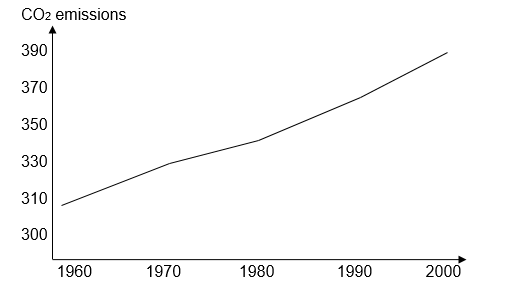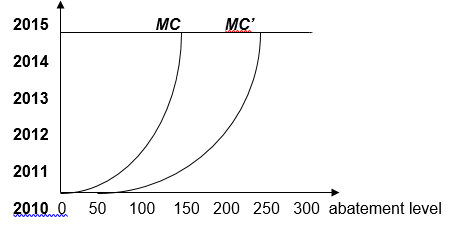Problem Statement
General Notions
The development of the human society, and especially the technological progress that has been observed over the recent two centuries, nowadays results is the huge amounts of various pollutants being emitted in the air, water, and soil daily. This, in its turn, leads to such serious problems occurring as the global warming and the greenhouse effect. The humanity, of course, tries to take steps to solve those problems, and the Kyoto Protocol, its DICE (Dyanamic Integrated Climate Economy) model, and the intended, but still not adopted, Copenhagen Conference Accord are some of those steps (Kolstad, 2000, pp. 11 – 12).
Analysis
However, the developed countries seem to be unwilling to cut emissions of carbon dioxide, the greatest environmental pollutant. This is reflected in the fact that the USA, world’s largest carbon dioxide producer, still have not ratified the Kyoto Protocol, while the ideas of 2009 Copenhagen Conference did not find their support from any of the participating countries. Thus, the problem still remains relevant, and specialists argue that the cap and trade system is the way out for the American society.
The major advantage of the system, as compared to carbon emission taxes, is that that it can actually reduce gas emissions as far as one carbon dioxide producer gets a specific limit for it, and those producers who do not meet the limit can buy the allowance from those who do meet it. Thus, the emissions of carbon dioxide are actually cut, even though at a minimum rate. Nevertheless, there is still a lively debate in the USA regarding the best way to solve the carbon emission problem, while no actual steps are being taken and the U.S. share of world’s carbon emission grows (by 15% between 1990 and 2004).
Purpose
Accordingly, the major purpose of the current work is to critically analyze the mentioned cap and trade system in order to find out the implications for its potential use in the United States. Moreover, the present paper will try to develop a comparative analysis and contrast the possible developments of the cap and trade system in the USA with the actual effects of the system in other countries.
Background
Thus, the issues of the greenhouse effects and the global warming are rather serious, which can be illustrated by the fact the emissions of CO2, i. e. carbon dioxide, are on the average increase of 12% annually. Other greenhouse gases, including methane, nitrous oxide, and fluorocarbons, have also increased considerably by the average figure of 30% between 1950 and 2000. Figure 1 illustrates the dynamics of CO2 emissions between 1960 and 2000:

Seeing the current picture, world countries address the ideas of the Kyoto Protocol they signed and ratified in 1997 and try to adopt the DICE (Dynamic Integrated Climate Economy), one of the major models of putting the climate change and economic interests of nations in accord through the use of cap and trade system (Stanton, 2009). The planned emission cuttings and actual successes of some countries in using the DICE are shown in Figure 2:
Fig. 2 International attempts to cut gas emissions.
Thus, one can see that the use of the DICE, and the cap and trade system as its direct instrument, brings actual results to the countries that have ratified the Kyoto Protocol and preferred cap and trade system to carbon emission tax policies.
Methodology
General Notions
The major methodological approach used for the purposes of this paper is the statistical analysis involving the variable of emission reductions fixed by cap as determined by the cap and trade system adopted in a particular region. The data are contrasted with the Kyoto Protocol requirements and the standard demanded caps established for the countries around the world. After this, the assumed caps and trades are taken and analyzed as for their potential to become effective means of legislative regulation of greenhouse gas emission reduction in the USA.
Regression Model
The regression model used for the purposes of the current paper uses the variable of emission reductions fixed by cap. The generalized regression model used in the paper makes use of the notions of time, t, marginal cost of caps for emission reduction, MC, and the actual extent of abatement. Figure 3 illustrates the regression model to be further used to trace the emission reductions fixed by cap considered through the prisms of offsetting and grandfathering of permits:

Cap and Trade System v Carbon Tax
Offsetting
Thus, offsetting is the policy of compensating the greenhouse gas producers for the ability to meet the cap established by the country’s government for a certain period of time, usually 1 year. This means that an enterprise that has an allowance to emit 100 tons of CO2 can sell the part of this allowance to another enterprise if it has met the cap of emitting 50 tons of CO2 for that year, and that another enterprise will have the allowance for 150 tons. So, the companies can enjoy offsetting policies, which motivates them to meet the established caps. Drawing from this, in every country that has ratified the Kyoto protocol and uses the cap and trade system, the official cap levels and offsetting policies are established at the following levels:
Fig. 4 International offsetting levels and caps.
Accordingly, if it is assumed that the United States adopt the cap and trade system, where offsetting will be one of the basic parts, the regression for the U.S. greenhouse gas emissions will look as follows (provided the cap for gas emission 50 MMt CO2e):

Thus, the regression models allows seeing that the first results of the cap and trade system will be observed in the United States in 2 years provided the system is launched in 2010. The major result will be preserving the marginal cost of the emission reduction at the similar levels, while the very greenhouse emission will be reduced by about 200 MMt CO2e.
Grandfathering of Permits
However, the cap and trade system is not completely deprived of its negative sides, and one of them is the so-called grandfathering of permits, i. e. the process when the governmental permit, or allowance, is granted to the company not as a result of an auction, but based on the company’s past emission rates, political interests, etc. The criticism of the idea of grandfathering is thus based mainly on the assumption that such allocation of permits will not actually reduce gas emission levels, but only provide the government with another means of political control. As a result, it would become possible for the government to cover the actual emission rates and report artificially created results (Kolstad, 2000, p. 87). Figure 6 reveals the negative effects caused by grandfathering of permits to the proportion of cost effectiveness and emission reduction in a country:

Thus, one can see that the grandfathering of permits can increase the costs associated with the emission regulation as much as three times from the level expected from the auctioning of gas emission permits. This makes the process of grandfathering of permits an unfavorable alternative for implementing, while the cap and trade system is strongly advised for the USA instead of carbon emission taxes.
References
Kolstad, C. (2000). Environmental Economics. New York: Oxford University Press.
Stanton, E. (2009). Towards Greater Transparency in Climate Economics: Deconstructing DICE-2007. Web.
Vincent, J. (2003). Handbook of environmental economics. Elsevier.